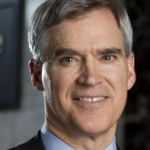 MarketsMuse ETF update profiles just-passed-by-Congress legislation that offers a sigh of relief for broker-dealers who aspire to frame ETF recommendations within the context of research (which might qualify them for ‘buyside research votes’), but have held back from issuing a buy, sell or hold recommendation for ETFs out of fear of Finra and/or SEC staffers sanctioning them.
MarketsMuse ETF update profiles just-passed-by-Congress legislation that offers a sigh of relief for broker-dealers who aspire to frame ETF recommendations within the context of research (which might qualify them for ‘buyside research votes’), but have held back from issuing a buy, sell or hold recommendation for ETFs out of fear of Finra and/or SEC staffers sanctioning them.
All can guess that those lobbyists engaged by ETF issuers and sell-siders who focus heavily on ETFs will be getting a hefty bonus in consideration for greasing the wheels and halls of Congress and helping brokerdealers creatively usurp Finra rules and regs when it comes to what is and what is not considered “research.” One group of folks not celebrating: top brass and salesman at Morningstar (read further)
Here’s the extract of the news from InvestmentNews.com
 ETF Legislation approved this week by the House Financial Services Committee would allow broker-dealers to publish ETF research reports without the reports being considered offers to buy shares in the ETF.
ETF Legislation approved this week by the House Financial Services Committee would allow broker-dealers to publish ETF research reports without the reports being considered offers to buy shares in the ETF.
The measure was co-authored by Rep. French Hill, R-Ark., and Rep. John Carney, D-Del.
A freshman legislator who came to Capitol Hill after working as a broker , Mr. Hill said most broker-dealers do not publish ETF research for fear of violating securities laws.
“This is a commonsense proposal,” Mr. Hill said at a May 20 committee hearing before the panel passed the bill. “With close to six million U.S. households holding and using ETFs, investors need access to this research.”
DOUBLE-DIGIT GROWTH
The ETF market has experienced double-digit annual growth over the past few years and, as of the end of April, included 1,496 funds with $2.1 trillion in assets, according to figures from Morningstar Inc.
As ETFs occupy a greater share of both retail and institutional investor portfolios, there’s a growing demand for insight about the vehicles, said Ben Johnson, director of global ETF research at Morningstar.
“There is a clear need for more research, more analysis across a very wide swath of the U.S. investor base,” Mr. Johnson said.
He said Mr. Hill’s bill is a good idea because investors would benefit from ETF research in the same way that they now can find research on individual securities and mutual funds.
If brokers issue their own ETF research, it could encroach on Morningstar’s turf. Morningstar can disseminate research through a so-called publisher’s exemption that applies to research organizations that aren’t regulated as securities firms.
“Any time there’s competition in the research space, that’s good for investors,” Mr. Johnson said. “It forces everyone to up their game.”
To continue reading this story from InvestmentNews.com, please click here






















